Sketch #1 - Blank White Cards
I think it’d be fair to say I misunderstood the prompt for sketch #1: “create a system for generating stories.” My effort, a card-based system, is definitely designed for generating story ideas. For lack of a more clever name, let’s call it Blank White Cards.
My inspiration came from a party game a friend of mine introduced me to by the same name. That version of Blank White Cards literally starts with what’s in the name: players grab a bunch of index cards or cut-up pieces of paper and start creating cards. Each card is supposed to feature a name, a drawing, and a set of instructions for the player who ends up drawing the card. With a good group, the game ends up being something like a mix between Truth or Dare and those Jackbox party games like Tee-KO or Fibbage.

Once players have made the cards, everyone takes turns drawing a card and has to follow the instructions. Cards can either be public–the person drawing it reads it aloud and then does what the instructions say–or it can be secret, meaning the person needs to follow the instructions without revealing them to the group. You can, of course, end up drawing your own card, so whatever silly or embarrassing thing you put on there has to be something you’d be willing to do in front of the assembled group. Here’s me after drawing a card called “coatrack,” which specified having to wear all the winter coats the group brought to a cabin upstate.
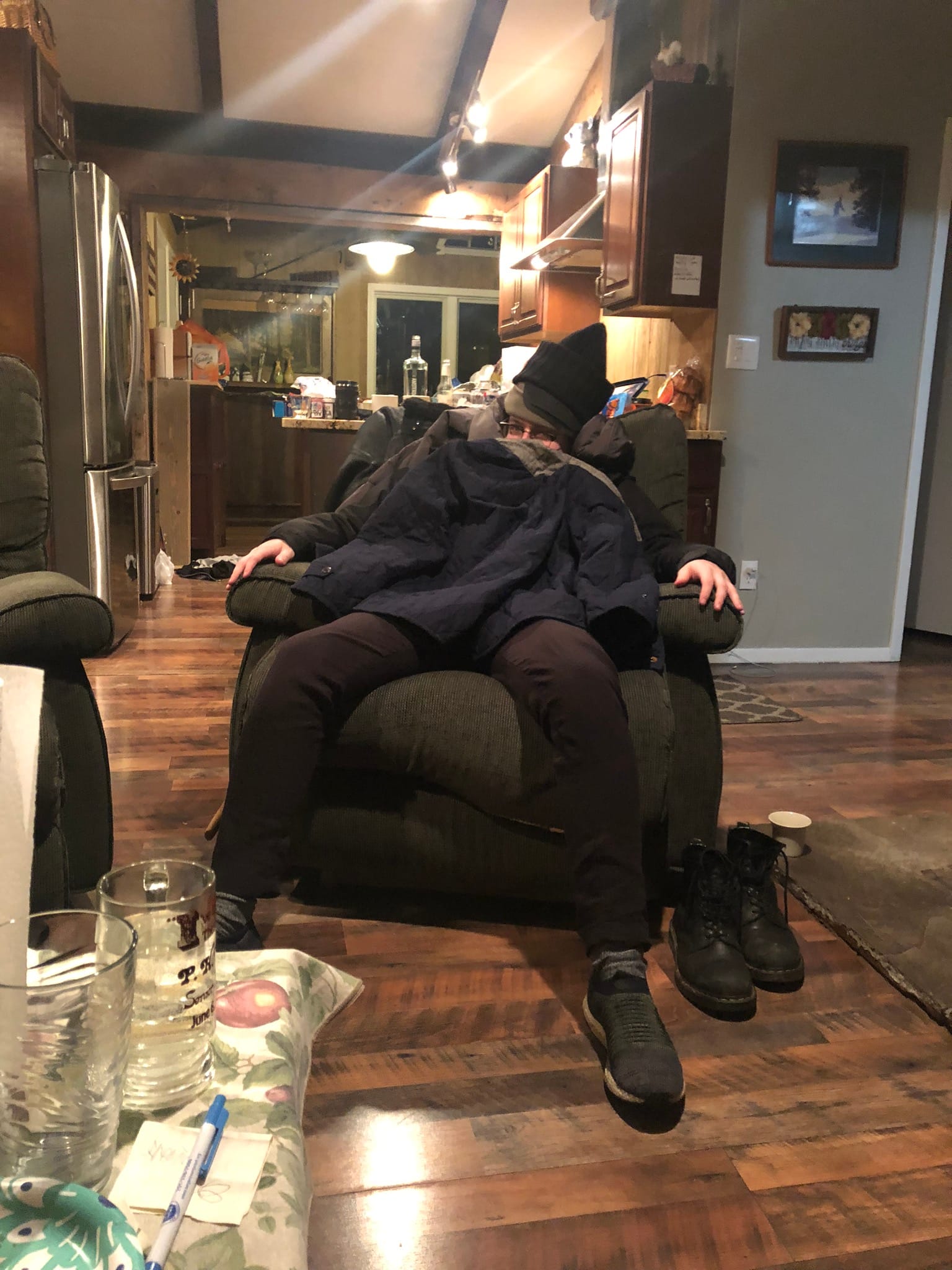
So what did I keep? The format of the cards, mainly. I like Blank White Cards as a party game because making the cards is fun by itself. Some people turn out to be great doodlers, some aren’t. Some card names are witty, some instructions end up being awful (and not always in a fun or hilarious sense).
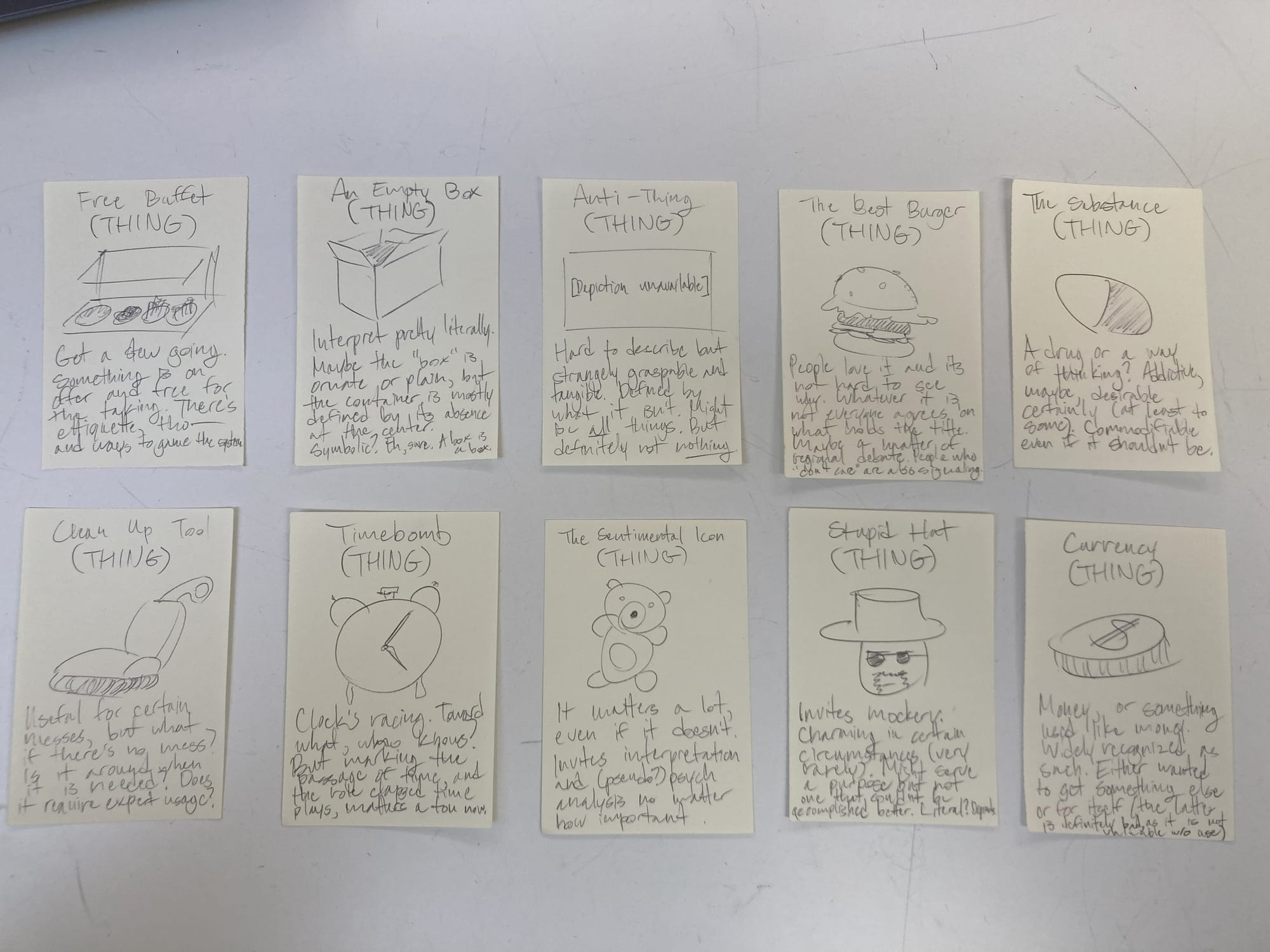
When it comes to creating stories, the problem I always encounter is having what feels like enough of an idea to get started. “An idea” or maybe “enough ideas,” because for me I don’t feel a spark when I’m just considering a character or a setting. I need the stuff that goes in a story along with some of the narrative structure stuff that surrounds and shapes it. I don’t love thinking in terms of genre or tropes (if there’s a serious media literacy problem today, tvtropes.com and the like aren’t actually helping).
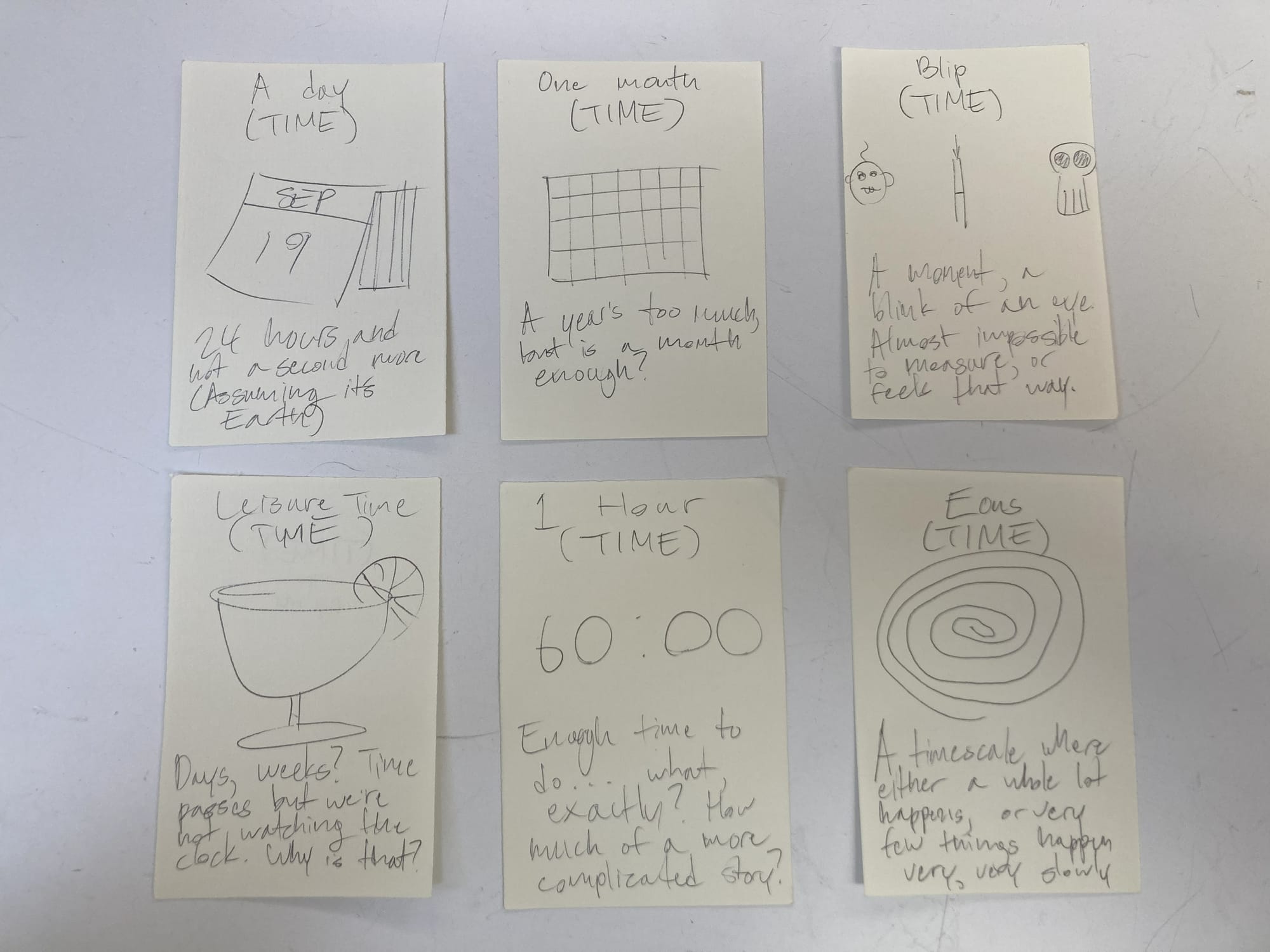
That’s why the cards I made try to avoid one set interpretation and especially common “parts” of stories. Yes, a small town might be a stock setting and a trickster a stock character, but I intentionally seeded the descriptions of the cards with suggestions or associations that could point to alternative ways of thinking about or using them.

For example: Having the small town and trickster in play could describe a story set in a town with a single character that could be described as a trickster. Or it could be a town populated by tricksters. Or the town itself could be a trickster, in a sense.
While I’ve intentionally made a few different categories of cards, that was more an attempt to help prompt ideas for cards than to impose structure on how the cards can be used. The thin “rules” embodied in the cards instruct a user to combine cards, but there’s no limits on what cards can be combined or what a combination entails.

Combining two cards from the time category, say a month and an hour? Maybe that implies a month that feels like it passes as quickly as an hour. Or a month of preparation leading to an anticipated hour, or the other way around.
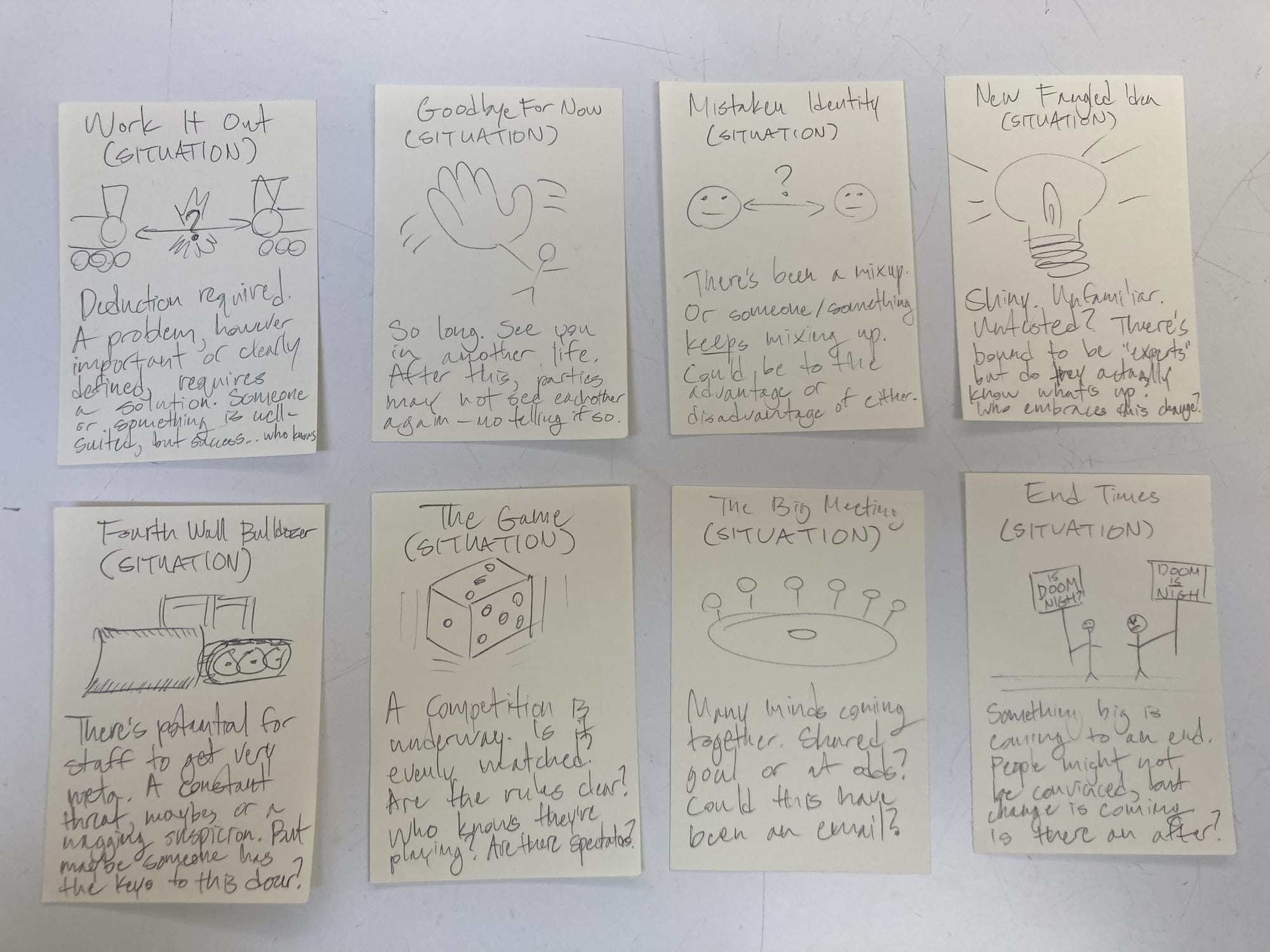
The rules about when to draw or discard cards are meant to be equally loose. For me–the only person using them–the idea is to introduce a bit of randomness and a suggestion of constraints to then end up shaping whatever the ending state of the cards may be. Say the goal is to end with 7 cards in play; if I feel like I’ve got something inspiring with 6 cards, then have to discard 2, then that’ll change the shape of what’s in front of me. Maybe that’s good, maybe that hurts. Maybe the hurting is good. If I feel attached to an arrangement of some cards I wrote a bunch of weird shit on, maybe that’s a good jumping off point for the story?
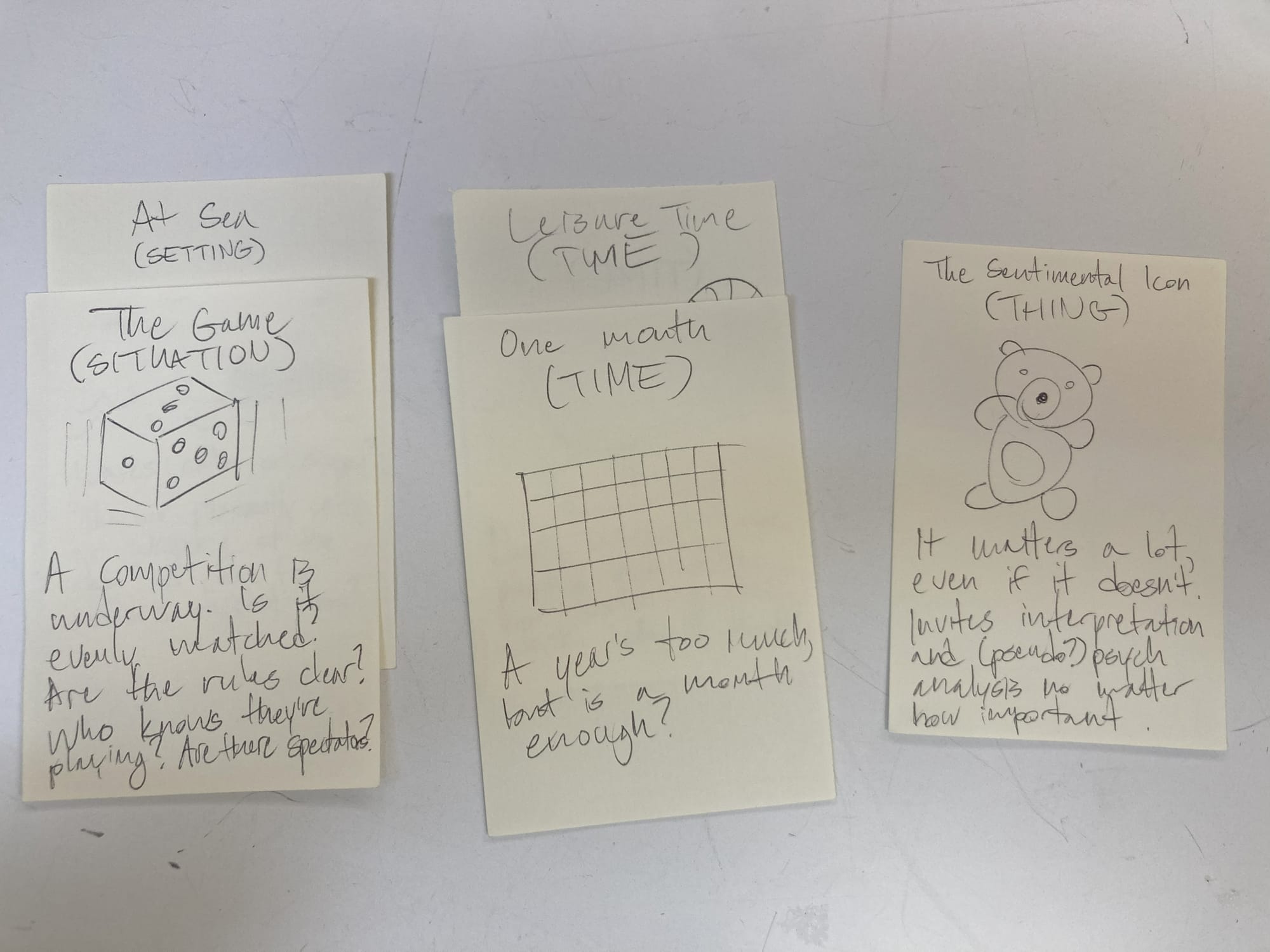
It isn’t a story, though. I guess we’ll save that for sketch #2.
